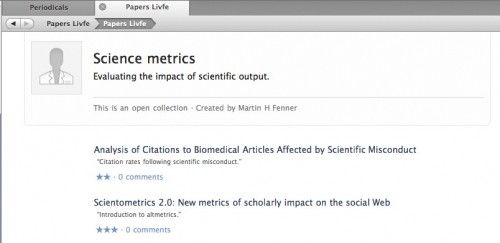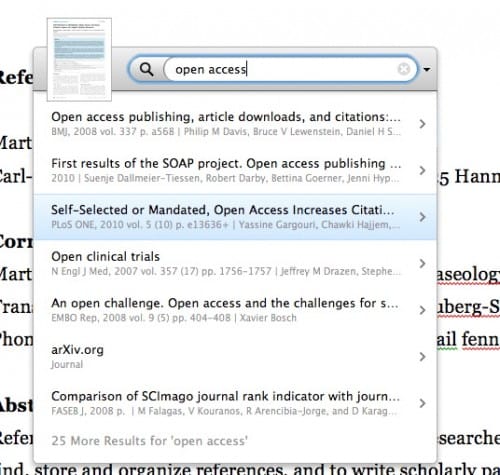The reference management software Papers has been a regular topic on this blog. I wrote about Papers in one of my first blog posts in May 2008, interviewed main developer Alex Griekspoor in October 2008, and held a poetry contest when Papers for iPhone was released in February 2009 (Stephen Curry won the first price for this poem).

Today Papers 2 was released, and with this major update Papers has grown into a full-fledged reference manager for the Macintosh (there is no Windows or Linux version). Papers 1 was released in 2007 as a tool to manage the PDF files of scholarly papers on your hard drive. Papers 1 did this job very well, but it was not a reference manager in the strict sense, because you couldn’t use Papers to insert citations into the manuscripts you were writing.
In order to add this feature, Papers first had to be completely rewritten to not only handle journal articles and the associated PDF files, but also all the other common reference formats – conference proceeding, book chapter, website, etc. A nice side effect that I haven’t fully explored yet is that Papers can now also store all your Powerpoint or Keynote presentations (but fulltext search in these presentations doesn’t seem to work yet).
Inserting references into manuscripts is done using a floating window activated from the menu bar or with a shortcut:

This feature works similar to the plugins used by Endnote, Mendeley, Zotero, etc., but in typical Papers fashion the implementation is much nicer. The plugin is available to all applications, e.g. other word processors besides Microsoft Word, your blogging software or your email program.
The other big limitation of Papers 1 wasn’t so obvious when Papers originally launched in 2007. But today most major reference managers allow users to share their references in private and/or public groups, as most research is done in groups and most manuscripts are written by multiple authors.
The sharing feature of Papers 2 is called Livfe. It is not as complete as the sharing features of some other reference managers (e.g. CiteULike or Mendeley). It is for example not yet possible to upload a complete Papers library to Livfe. And Livfe doesn’t have a web interface, but only works through Papers.

The difference between Papers 2 and other reference managers is not so much the feature set. What sets Papers really apart is the love that went into the design of the program. Papers doesn’t just get the job done, it allows you to have fun searching for references or reading – and now also writing – a paper. This makes Papers 2 a strong competitor against some of the other established programs that for example have more than 25 years of experience with reference management (Endnote), think that reference management should be done as Open Source software (Zotero), do everything in the browser (Refworks), or see reference management primarily as a social application (Mendeley).


